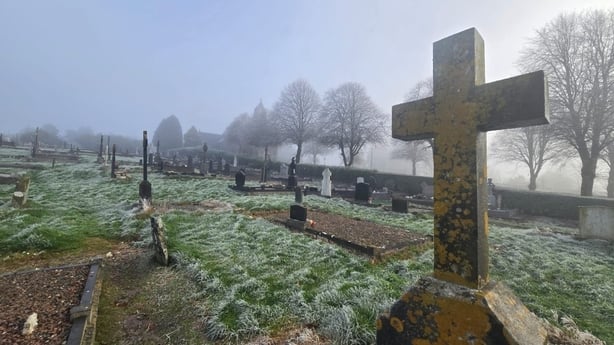An Garda Síochána has said it will work with the local coroner in Co Monaghan to correctly identify the human remains exhumed last year as part of the search for the burial place of Joe Lynskey.
It comes after the Independent Commission for the Location of Victims' Remains confirmed the human remains are not those of Mr Lynskey, who was abducted and murdered by the IRA more than 50 years ago.
The remains were exhumed after the commission received information about suspicious activity at a grave in Annyalla cemetery during the 1970s.
The commission also confirmed the remains do not belong to any of the remaining members of the so-called 'Disappeared'.
The remains were exhumed from a family grave at Annyalla outside Clontibret in Co Monaghan last November and analysed by Forensic Science Ireland.
FSI’s Dr Hilary Clark said "multiple samples" were taken from the bones, adding it took several weeks to get a result.
She said extracting DNA "can actually be quite complicated depending on the condition of the bones".

The DNA profile was cross-checked with family members of Mr Lynskey and other members of the Disappeared but there was no match.
In a statement to RTÉ News, An Garda Síochána said it "will work with the local coroner to identify the human remains which will include advances in sciences including DNA".
It said that "custody of human remains are a matter for the local coroner".
Attempts to identify the remains will include cross checking the DNA on databases both in Ireland and internationally.
Identification of human remains can be a lengthy process.
Dr Denis McCauley, coroner for Co Donegal, said there are a number of techniques used to identify remains depending on their condition.
Primary characteristics will be examined when a body is first found, looking at visual identification, DNA and dental work.
Forensic anthropology is also utilised - looking at clothing, unique markings like a tattoo and previous surgeries.
Dr McCauley said a body can be very well maintained if found in a bog.
The remains discovered in Co Monaghan would have been skeletal, which would rule out many of the above identification methods.
Dr McCauley said if skeletal remains include a lower jaw then dental identification can sometimes be used.
He said DNA can be extracted from bones, but not always.
However, in the Monaghan case DNA was extracted and ruled out as the remains of Mr Lynskey and three others of the Disappeared.






